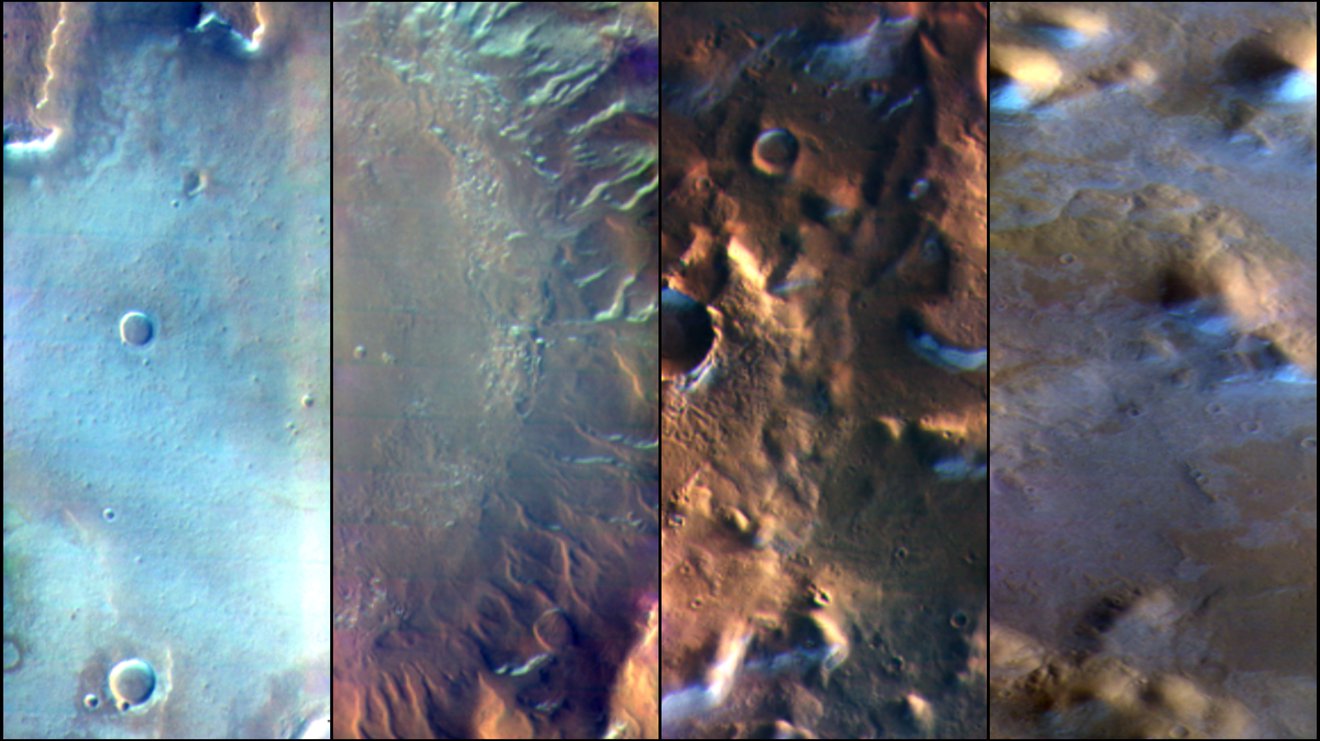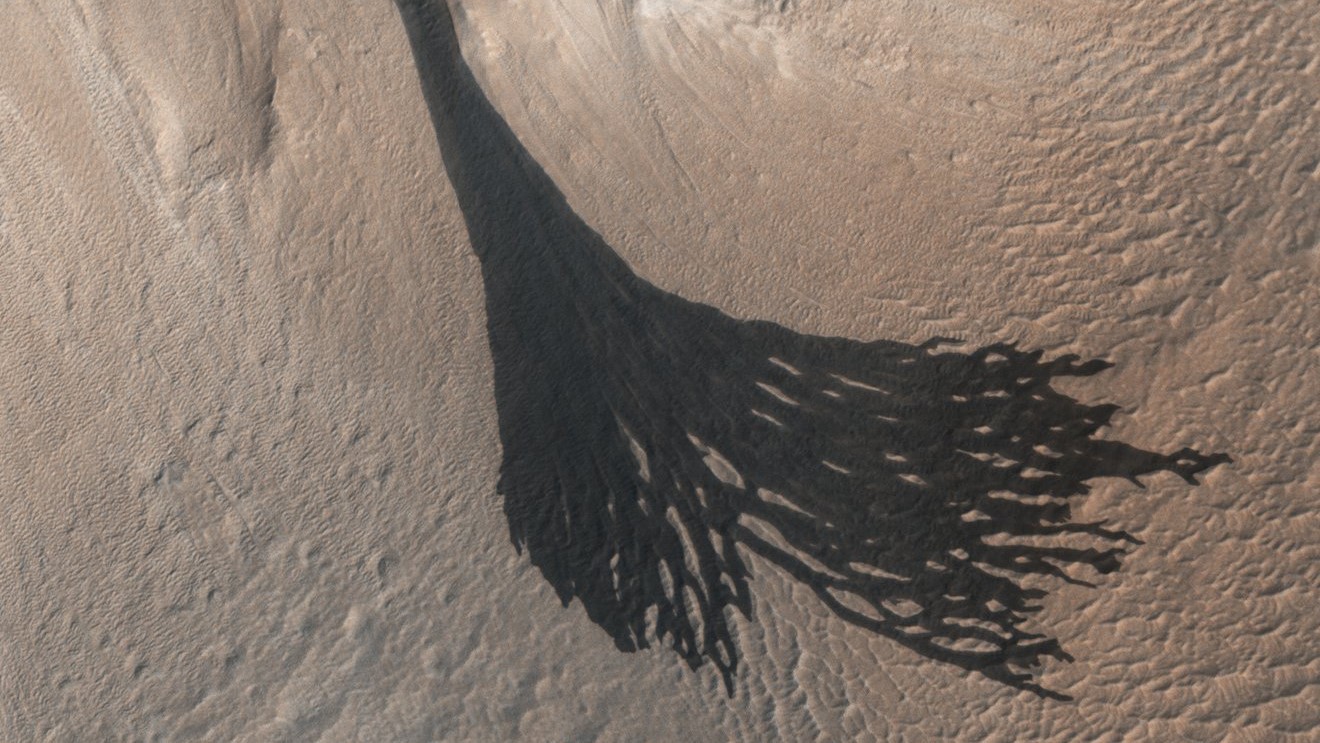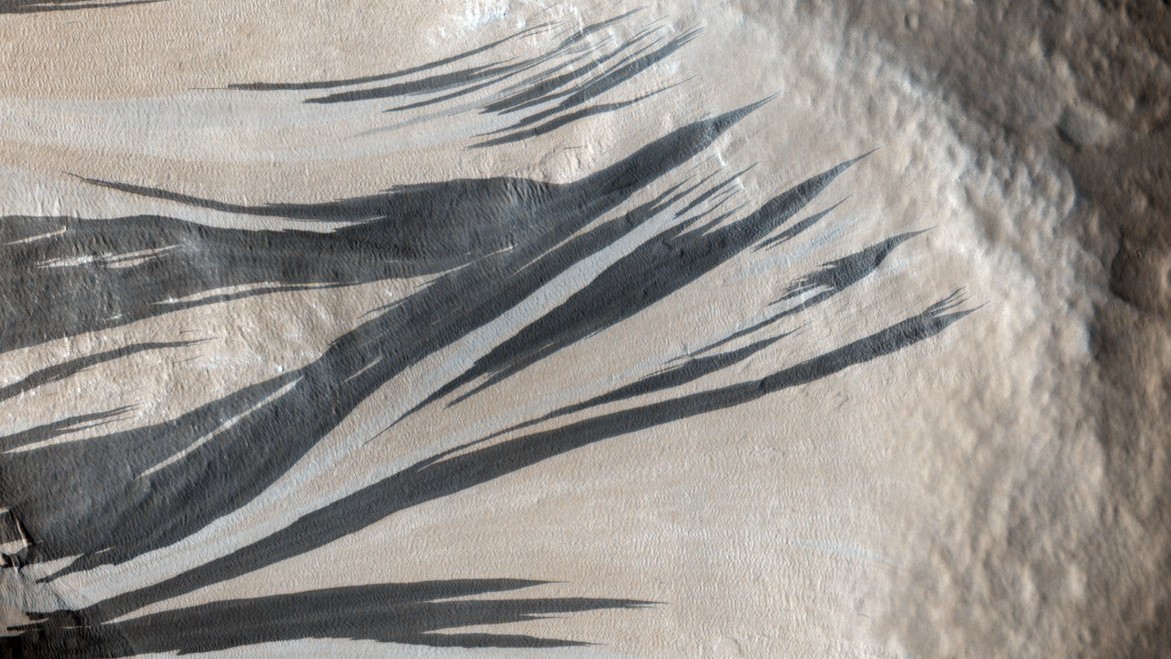Mars sports 'invisible' frost and dust avalanches, and scientists may finally know why
There's no phenomenon on Earth quite like it.

There are many mysteries on Mars, and scientists might have just solved two of them.
Mars sports vast regions of frost that can only be seen in the infrared range of the spectrum, not in visible light, for reasons scientists couldn't explain. Now, using data from NASA's Mars Odyssey orbiter, scientists at the agency's Jet Propulsion Laboratory (JPL) in Pasadena, California, and Northern Arizona University in Flagstaff, Arizona, have come up with a theory that explains this "invisible" frost on the Martian surface. The scientists suggest that the frost may be camouflaged by dust, an idea that could also explain the similarly mysterious phenomenon of dust avalanches on Mars.
Frost on Mars develops overnight and is made of carbon dioxide. It's essentially dry ice, so when the sun rises, the frost vaporizes rather than melts. The visible-light camera on Mars Odyssey, which has been orbiting the Red Planet since 2001, captures regions of the blue-white frost regularly.
But the spacecraft's infrared camera shows a very different landscape — it photographs more expansive areas of frost that don't appear on the visible-light camera.
Related: 12 amazing photos from the Perseverance rover's 1st year on Mars
"Our first thought was ice could be buried there," Lucas Lange, a JPL intern on the project said in a statement. "Dry ice is plentiful near Mars' poles, but we were looking closer to the equator of the planet, where it's generally too warm for dry ice frost to form."
So the scientists turned to an alternative theory — they suspect what the infrared camera is picking up is "dirty frost," which is contaminated by dust. This dirty frost is camouflaged in visible light, but the heat-sensitive camera can still capture its cold temperature.
Get the Space.com Newsletter
Breaking space news, the latest updates on rocket launches, skywatching events and more!

The dirty frost theory would also explain another Martian mystery, the phenomenon of dust avalanches. Scientists have explained long, dark streaks on Martian slopes as the result of dust avalanches that have removed the top layer of regolith to reveal a darker colored material underneath.
The researchers investigating the "invisible" frost determined that these "slope streaks," as they're known, appear in areas that have morning frost. So the scientists suggested that the avalanches may be triggered as the frost vaporizes, loosening the dust grains on the slopes.

"Every time we send a mission to Mars, we discover exotic new processes," Chris Edwards, a planetary scientist at Northern Arizona University and a co-author of the paper, said in the statement. "We don't have anything exactly like a slope streak on Earth. You have to think beyond your experiences on Earth to understand Mars."
The team's research was published in the Journal of Geophysical Research last month.
Follow Stefanie Waldek on Twitter @StefanieWaldek. Follow us on Twitter @Spacedotcom and on Facebook.
Join our Space Forums to keep talking space on the latest missions, night sky and more! And if you have a news tip, correction or comment, let us know at: community@space.com.

Space.com contributing writer Stefanie Waldek is a self-taught space nerd and aviation geek who is passionate about all things spaceflight and astronomy. With a background in travel and design journalism, as well as a Bachelor of Arts degree from New York University, she specializes in the budding space tourism industry and Earth-based astrotourism. In her free time, you can find her watching rocket launches or looking up at the stars, wondering what is out there. Learn more about her work at www.stefaniewaldek.com.









